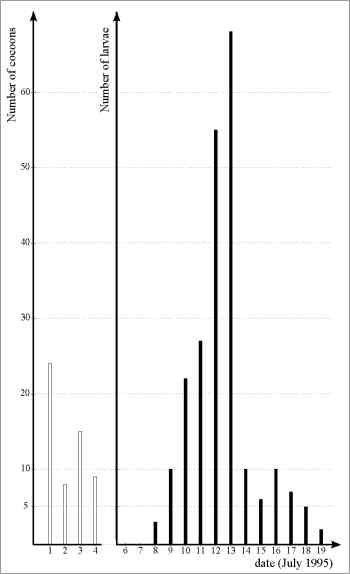Only a late stage (possibly the third) larva and the pupa have currently been decribed (Musso 1978). He found the larva sucking out a Scarabaeid larva. Samples of soil from Darmstadt were checked with the aid of a sieve, but no larvae could be found. Nevertheless it proved possible to breed the first stage larvae from sand "cocoons" collected after deposition by a female on July 1st - 4th. After four days the first stage larvae started emerging from the sand "cocoons" at the base of the projection. It is not known at what time they left the eggs inside the "cocoon". Fig. 7 shows emergence data. There was a distinct peak in emergence about 12 days after the first oviposition and all sand "cocoons" were vacated by the 19th day. The first stage larvae were kept alive another 12 days, but unfortunately it was impossible to find a suitable food supply for them.
 |
Fig. 7: Oviposition and first stage larvae of a specimen of Dasypogon diadema in the laboratory (collected in Darmstadt 1995). The left portion of the figure shows the number of collected sand "cocoons" during the period July 1st - 4th. The right portion of the figure gives the number of first stage larvae, which emerged during the period July 8th - 19th. |